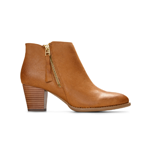
How To Rebuild Fallen Arches

If you’re part of the nearly 30% of the population who’s experienced fallen arches in one or both of your feet, you know just how uncomfortable an experience it can be.1 Swelling, inflammation, aching feet and legs—there aren’t a lot of upsides to an arch that’s on its way down.
Luckily, fallen arches are relatively easy to reverse and repair with a few simple steps. Through a combination of rest, exercise, and proper arch support, you can get your feet back to their original, well-supported shape in no time. Read on for our guide on how to rebuild arches in flat feet.
What Causes Fallen Arches and Flat Feet?
Whether due to a lifelong condition or an acute incident like an injury or overexercise, many people suffer from some degree of flat feet or fallen arches. But what causes these common podiatric problems, and how do you know which of the two you may be dealing with?
First, it’s important to have a little background knowledge about our feet—and in particular, their structure. Our feet are made up of muscles and bones that are connected by thick bands of tissue. These connective tissues are what allow our feet to move so that we can walk, run, jump, dance—you get the idea.
There are two types of connective tissue:
- Tendons – Tendons connect muscle to bone, helping to move the bone while also preserving the original structure. In the feet, two of the largest tendons are the posterior tibial tendon, which connects the calf muscle to the arch of the foot, and the Achilles tendon, which connects the muscles in the back of the calf to the heel bone.
- Ligaments – Ligaments attach bones to other bones and help keep the entire skeletal structure stable. In the feet, the largest ligament is the plantar fascia, which is a band that stretches from your heel to the front of your foot, providing support for your foot’s arch.
These connective tissues play a major role in whether you have flat feet and whether your feet are properly supported (to avoid fallen arches). In fact, flat feet are common in babies and young children because their ligaments haven’t fully developed yet.2 However, as we age, our ligaments and tendons typically develop with us, creating the supportive arches in our feet.
Flat Feet
If your connective tissue doesn’t become strong enough during childhood to support your arch, or if you suffer from other issues or conditions related to the feet early on in life, you may develop flat feet. Flat feet typically come in one of two forms:
- Flexible flat feet – This is the most common kind of flat feet, and it refers to feet that do have arches when the feet are at rest. However, once weight is put on the foot, these arches flatten out and disappear. This type of flat foot is caused by weak ligaments that are unable to fully support the arch.
- Rigid flat feet – Rigid flat feet are less common, but they often have more serious side effects. Rigid flat feet are caused by abnormalities in the bone structure of the foot, usually from either a genetic difference or injury. Rigid flat feet have absolutely no arch at all, regardless of whether the individual is standing or at rest.
Because flat feet lack the structure and support of arched feet, individuals with flat feet are uniquely susceptible to a number of health issues, including:
- Arthritis
- Shin splints
- Bunions
- Pain in the lower part of the body, especially through the back and knees
Fallen Arches
When flat feet develop in adulthood, they’re called fallen arches. Fallen arches are sudden onsets of flattened arches (i.e. arches that have “fallen” from their once normal position) on one or both feet. The development of this condition is often accompanied by pain, swelling, inflammation, and discomfort. If left untreated, the foot can begin to turn outward over time, and the pain can intensify as the dropped arch changes the bone structure of the foot.
Fallen arches can be caused by any number of factors, but some of the most common culprits include:
- Overuse and overexertion – One of the easiest ways to sustain a fallen arch is by putting too much stress on your foot without adequate recovery. Over time, this can cause inflammation and tendonitis that ultimately leads to a fallen arch.
- Injury and accidents – Injuries or accidents—such as slips, strains, or anything in between—are some of the most common causes of fallen arches.
- Progressive damage and chronic illness – Even if you never experience a major foot injury, repeated minor damage to your feet can add up over the years. Not to mention, if you have a progressive chronic illness, like diabetes or rheumatoid arthritis, you may also be more prone to developing fallen arches.
How To Rebuild Fallen Arches
If you’re nervous that your fallen arches have doomed you to a life of bone spurs and bunions, have no fear—it’s actually a relatively fixable condition! You just have to incorporate a few easy tricks into your daily routine to ensure optimal foot health. Here are a few of our favorites:
Exercise
While exercise can sometimes be the root cause of several foot ailments, in this case, it may actually be an effective flat foot treatment. While dealing with fallen arches, it can often be easy to avoid any activity altogether for fear of hurting yourself further, but one of the best ways to get your feet back on their A-game is with gentle exercise and restorative movement.
If your feet feel well enough, try giving them a stretch by heading out on a short, slow walk around your neighborhood. Avoid anything that might cause undue stress on your feet like uphill climbs, carrying anything heavy as you walk, or walking at a pace faster than a brisk stroll.
Rest
On the other hand, if you’re dealing with a more acutely painful situation, sometimes, the best option is to rest up and plan to tackle any major moves later on. Overuse is often the root cause behind many chronic foot problems, so it’s best not to push it if you’re feeling uncomfortable.
No matter what, avoid any strenuous or potentially damaging activities when dealing with fallen arches—steer clear of fast-moving sports, like basketball or tennis, as well as anything too high-impact on the feet, like going for a run or performing any exercise with excessive jumping.
Insoles
Another option to help support a collapsed arch is through shoe inserts or insoles. Insoles offer a great, affordable way to provide orthotics-level comfort and support to your existing shoe collection. Here are a few excellent options:
- Dealing with foot pain and need something that’ll provide immediate comfort? Try the Vionic Relief Insole. Designed by podiatrists to tackle foot and lower leg pain before it even starts, this insole features a molded EVA base and stabilizing Tri-Planar Motion Control for top-of-the-line comfort.
- Looking to lace up your shoes and get out there in your new insoles? Try the Active Insole. It’s specially designed to better protect against shocks and high-impact activity, making it perfect for those who still want to get in their weekly (or daily) walks.
- Worried about fitting an insole into your sleekest heels? Have no fear—the Vionic Slim Fit Insole is your new party companion. Providing one-of-a-kind support in a simple, stylish shape, these insoles will have your favorite pair of heels feeling like your favorite pair of kicks.
Stretching
Building a gentle, at-home stretching routine to move and flex your injured foot is one of the best ways to repair a fallen arch, as these careful movements can help rebuild weakened ligaments in a slow, safe way.
Here are a few of our favorite stretching exercises to try:3
- Arch Lifts – While standing, carefully raise and lower your arches with your feet flat on the floor.
- Heel Lifts – While standing, raise and lower your heels one at a time.
- Towel Curls or Marble Pickups – While sitting, use the natural dexterity of your toes to grab marbles or try to scrunch up a towel placed under your feet with your toes.
- Calf raises – Similar to heel lifts, this movement is done standing and involves raising yourself onto the balls of your feet, then slowly lowering yourself down.
Restorative Practices
Outside of movement, other restorative practices can also have a big impact on your foot health. For instance, icing your feet can help reduce inflammation and soothe painful areas—even just a few times a day can make a serious difference.
If ice isn’t your thing (or if you live in a colder area where the idea of icing your feet isn’t appealing), you can also try gentle foot massages (emphasis on the gentle!) to help coax your foot back into an arch.
For Fallen Arches, Flat Feet, and More, Choose Vionic
Fallen arches can be uncomfortable, painful, and frustrating—but with the right healing techniques and products, like light exercise, gentle stretching, and supportive insoles, you can alleviate fallen arch pain and get back to living your life.
At Vionic, we’re all about using innovative technology to design insoles and orthotics-inspired shoes that promote better foot health. And, not only are our products stylish, but they’re also trusted by The American Podiatric Medical Association, so you can feel confident that you’re treating your feet to the best shoes and insoles around.
Explore our collection today to feel the Vionic difference for yourself.
Sources:
- Cronkleton, Emily. “Flat Feet Exercises.” Healthline. Updated 19 April, 2023. https://www.healthline.com/health/flat-feet-exercises
- “What You Should Know About Flat Feet.” Healthline. https://www.healthline.com/health/pes-planus
- “Exercises for Flat Feet and Fallen Arches.” Cleveland Clinic. 11 March, 2022. https://health.clevelandclinic.org/exercises-flat-feet-fallen-arches/












